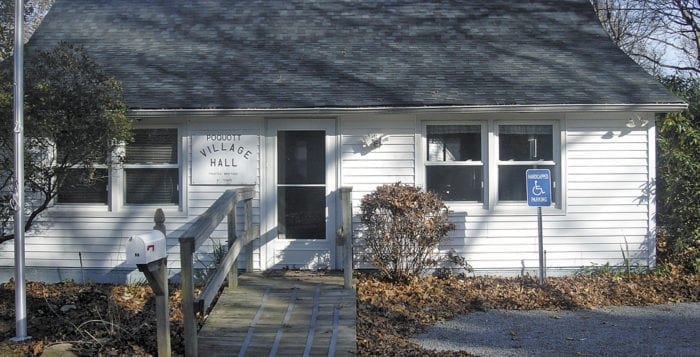By Rita J. Egan
As the Village of Poquott board of trustees budgets for the upcoming fiscal year, the cost of a proposed dock is still at the forefront of a few residents’ minds.
At an April 12 village public hearing, board members approved the 2018-19 preliminary budget. The village plans to spend $533,839 in the upcoming fiscal year, about a $34,000 increase over the last period. The preliminary budget stays under the tax levy increase cap, with an anticipated tax rate of $15.41 per $100 of assessed property value.
Treasurer Ron Pulito said it is estimated about $34,000 of the budget will be to pay the first installment of a five-year note for the village’s proposed dock. This amount would be taken from the village’s fund balance. The dock was originally estimated at $150,000 but the board opened bids at the beginning of the April meeting and the proposals were higher than anticipated.
“We have a good budget next year with question marks next to what happens with the dock, and we’re staying under the cap.”
— Ron Pulito
Pulito said there will be an estimated $47,000 deficit the current fiscal year, which would leave approximately $55,000 in the village fund balance. He said he does not expect much change in costs like snow plowing and garbage collection, and he said not much would be needed from the fund balance in the future for those items. He said while the budget includes funding for the dock it didn’t include any work on village hall.
“We have a good budget next year with question marks next to what happens with the dock, and we’re staying under the cap,” Pulito said.
Resident Felicia Chillak said she was concerned that the fund balance isn’t as high as past years and asked what would happen if there was a microburst storm like the one that hit the village a few years ago. She said the first day of cleanup after the storm cost the village $30,000.
“I personally feel [it’s better] to leave the fund balance and raise the taxes a little bit, if that’s going to keep us on the safer side,” Chillak said.
If the board decides not to go ahead with building the dock, the treasurer said the budget would break even. Pulito said if the board does go forward with the construction and more funds are needed, the village may be able to apply for a loan with a longer payment period.
“If you can’t afford it, you can’t afford it,” resident Cindy Davis said. “You don’t go ahead. You don’t bust your budget for something like this.”
A decision on dock bids was tabled until May. The board will vote on the final 2018-19 budget in an upcoming meeting.






















